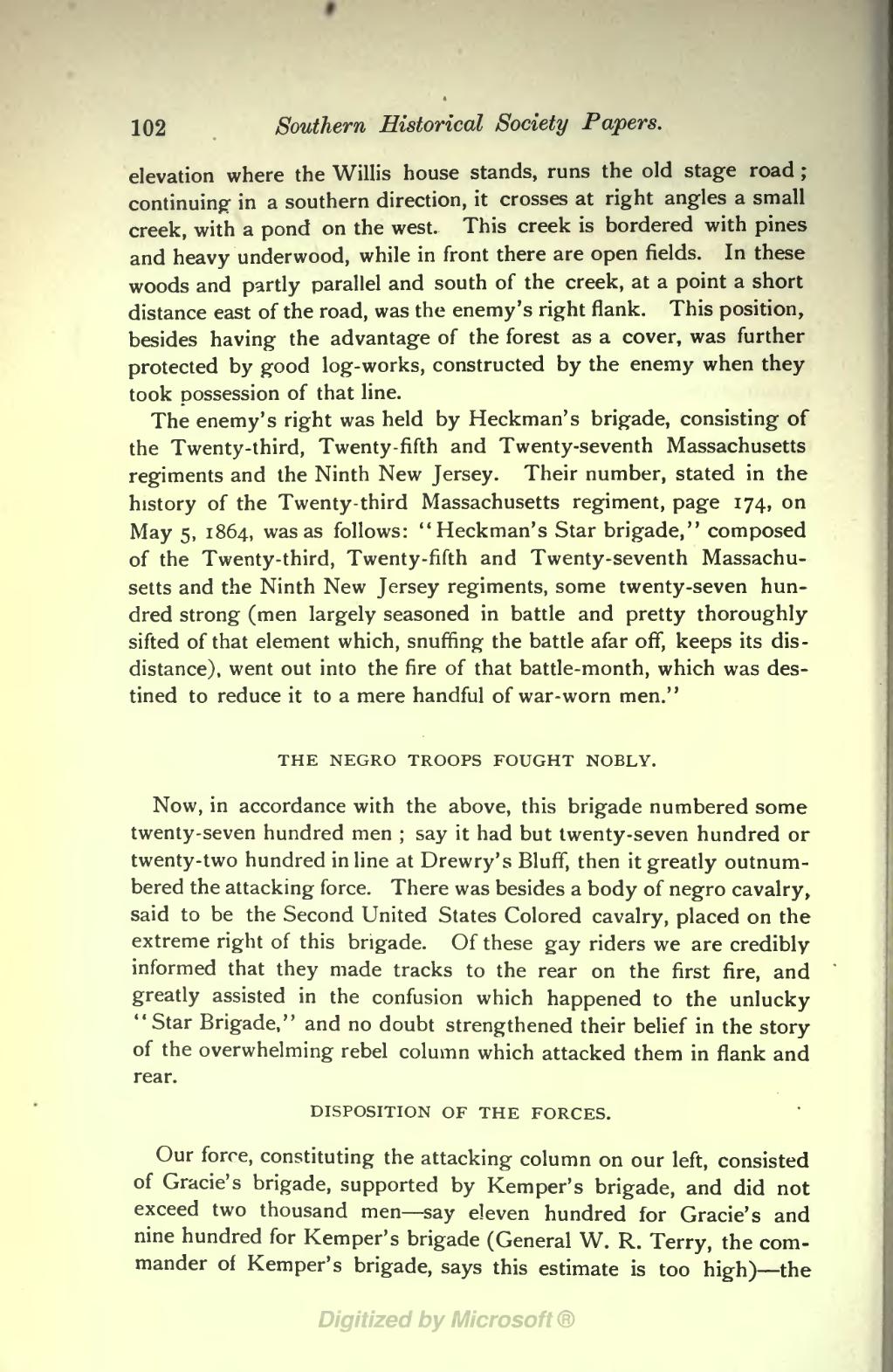102 Southern Historical Society Papers.
elevation where the Willis house stands, runs the old stage road ; continuing- in a southern direction, it crosses at right angles a small creek, with a pond on the west. This creek is bordered with pines and heavy underwood, while in front there are open fields. In these woods and partly parallel and south of the creek, at a point a short distance east of the road, was the enemy's right flank. This position, besides having the advantage of the forest as a cover, was further protected by good log-works, constructed by the enemy when they took possession of that line.
The enemy's right was held by Heckman's brigade, consisting of the Twenty-third, Twenty -fifth and Twenty-seventh Massachusetts regiments and the Ninth New Jersey. Their number, stated in the history of the Twenty-third Massachusetts regiment, page 174, on May 5, 1864, was as follows: "Heckman's Star brigade," composed of the Twenty-third, Twenty-fifth and Twenty-seventh Massachu- setts and the Ninth New Jersey regiments, some twenty-seven hun- dred strong (men largely seasoned in battle and pretty thoroughly sifted of that element which, snuffing the battle afar off, keeps its dis- distance), went out into the fire of that battle-month, which was des- tined to reduce it to a mere handful of war-worn men."
THE NEGRO TROOPS FOUGHT NOBLY.
Now, in accordance with the above, this brigade numbered some twenty-seven hundred men ; say it had but twenty-seven hundred or twenty-two hundred inline at Drewry's Bluff, then it greatly outnum- bered the attacking force. There was besides a body of negro cavalry, said to be the Second United States Colored cavalry, placed on the extreme right of this brigade. Of these gay riders we are credibly informed that they made tracks to the rear on the first fire, and greatly assisted in the confusion which happened to the unlucky "Star Brigade," and no doubt strengthened their belief in the story of the overwhelming rebel column which attacked them in flank and rear.
DISPOSITION OF THE FORCES.
Our force, constituting the attacking column on our left, consisted of Gracie's brigade, supported by Kemper's brigade, and did not exceed two thousand men say eleven hundred for Gracie's and nine hundred for Kemper's brigade (General W. R. Terry, the com- mander of Kemper's brigade, says this estimate is too high) the
